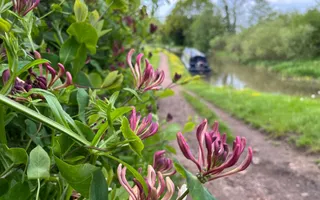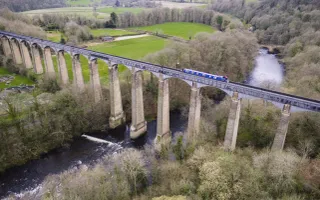Heathlands are a rare and important type of open habitat, made up of species such as heather, bilberry, broom and fine grasses.
The UK has lost over 80% of its lowland heath in the last 200 years due to changes in agriculture, land development, and reduced levels of woodland. We are lucky to have some areas of heathland along our canal network which support a range of reptiles and mammals, as well as some rare invertebrate species, including the small heath butterfly and the bilberry bumblebee.
We will be carefully managing this priority habitat by improving existing heathland and extending suitable areas by planting more heather, bilberry and acid wildflower species.
Trialling new techniques
Our waterways offer a unique opportunity as a potential heathland mosaic corridor, so we are planning to trial techniques to improve canal embankments and expand this open habitat even further.
The trials will include soil inversion (where topsoil is turned over and buried under subsoil below), humus removal (getting rid of decomposed plant and animal waste) and soil acidification (adding elements that reduce the pH balance in the soil).






